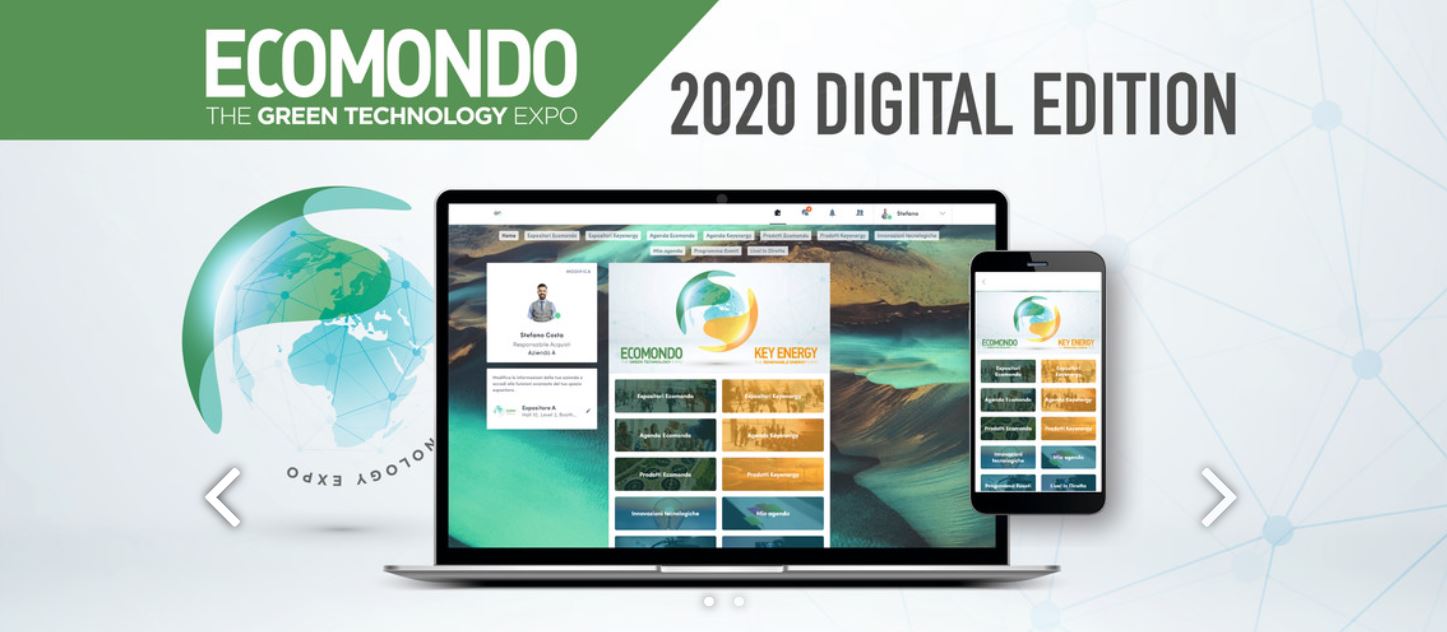
The CE Lab at Ecomondo 2020 Digital Edition to speak about Circular Economy and Open Innovation
The COVID crisis reinforced the need to contrast climate change, biodiversity loss and pandemics. Economic regeneration should address public funds to boost a green, circular economy that is anchored in nature-based solutions and geared towards public well-being, in line with the UN Agenda 2030 (17 SDGs) and European Commission’s European Green Deal. This will enhance economic and environmental resilience, create jobs and improve health and well-being in both rural and urban communities.
In this context, Ecomondo - the benchmark event in Europe for technological and industrial innovation - helps companies to become world leaders in innovation, promoting the development of an innovative and sustainable entrepreneurial ecosystem. An international event with an innovative format that oversees the entire circular economy chain, from eco-design and efficiency to the recovery and enhancement of raw materials and energy, transport, reclamation and upgrading of contaminated areas (including marine) encouraging international networking and the growth of companies in markets around the world.
The 2020 Digital Edition was animated by a calendar of approximately 120 online events to guide you through the Green Deal, industry regulations, sector case studies where Italy leads the way and the impact of the pandemic. The Circular Economy after COVID-19 crisis panel is in this latter vein and questions some key points:
- What should be revised within the circular economy and bioeconomy agendas at local and global level?
- How financial support for re-launching the economy should be used to widen the commitment of new actors in the circular economy transition? How will this also contribute to prevent future pandemics crisis?
The Circular Economy Lab - the innovation initiative that arises from the partnership between Cariplo Factory and Intesa Sanpaolo Innovation Center to foster the evolution of the Italian economic system and spread new models of value creation in the collective interest, accelerating the transition to circular economy models - intervened to answer, among other players - Intesa Sanpaolo, Ellen MacArthur Foundation, Copenhagen Institute of Interaction Design, Microsoft, Agici, Università LUISS, Enel, Caviro Extra - with its own contribution.
The panel - “Accelerate the transition through open innovation”, moderated by Stefano Martini, Head of Circular Economy Lab, Intesa Sanpaolo Innovation Center - stresses the importance of the strategic and cultural approach that leads a company to absorb and use external resources and to introduce its own skills on the market to maintain its competitiveness.
"In a context that surpassed the closed innovation model - explained Riccardo Porro, Chief Operations Officer, Cariplo Factory - the best talents are not found within our company, but travel and work in different organizations; the capital market is increasingly concentrated on innovative companies that develop disruptive approaches compared to the past; the winner of the competitive scheme is not the one who produces the best innovations within, but who is able to integrate into its core business what is outside the scope of the company to generate value in a long-term logic".
L’Open Innovation develops from this context and underlines the possibility that the company incorporates resources already available on the market without generating them internally. Which are its benefits?
- Creation of new products and services and innovation of the old ones
- Building of a community that involves the customer base in co-creation processes
- Change management, that is the possibility to work on the business culture together with the employees
- Time-to-market acceleration
- Innovation risk reduction
The transition from linear models towards the Circular Economy actually requires a great effort, that of "making innovation" in all the phases of the product life cycle, and no large company is able to manage this change exclusively with its own internal resources. In fact, contamination and exchanges with the outside world are necessary, in two words: Open Innovation.